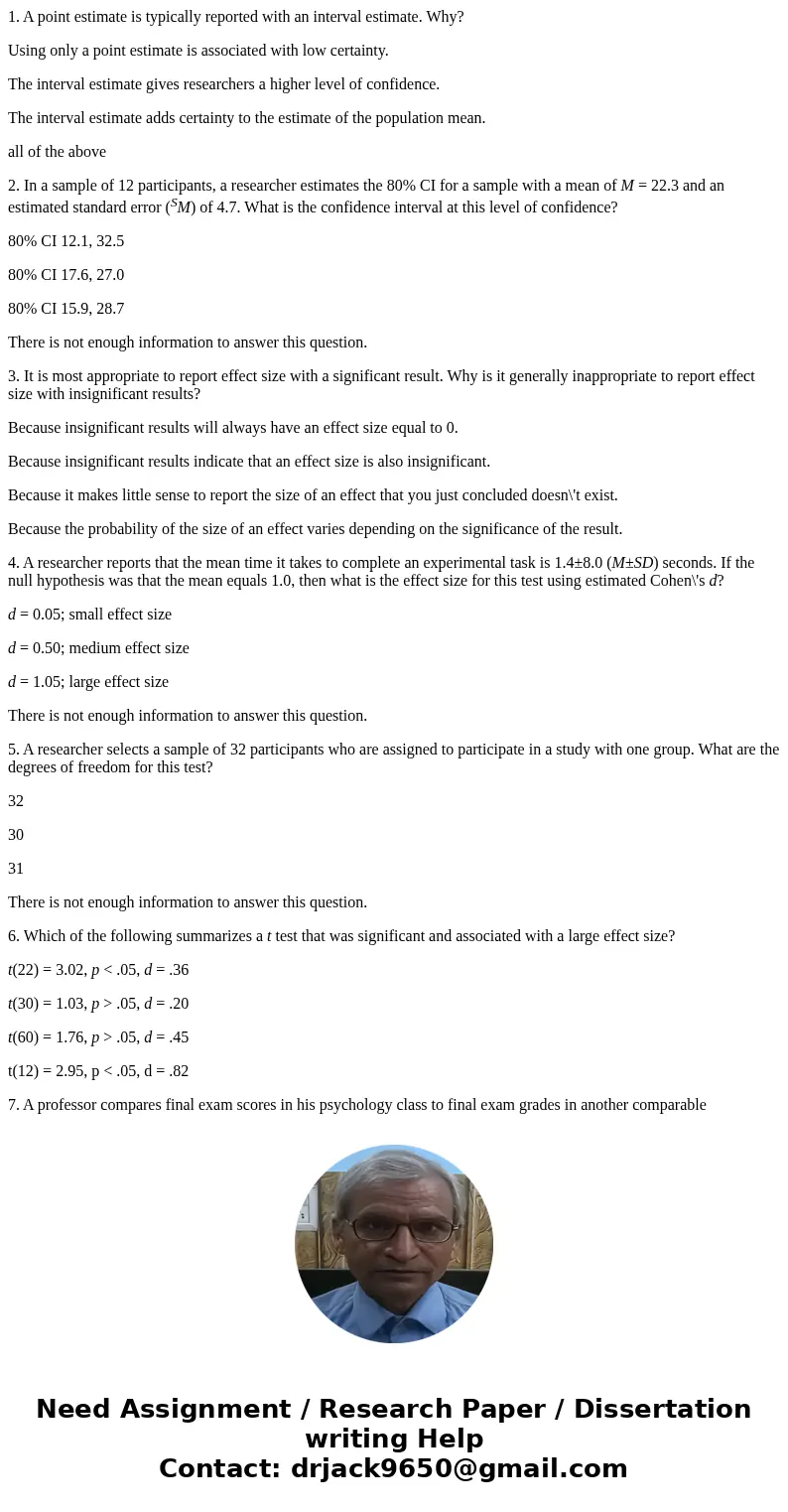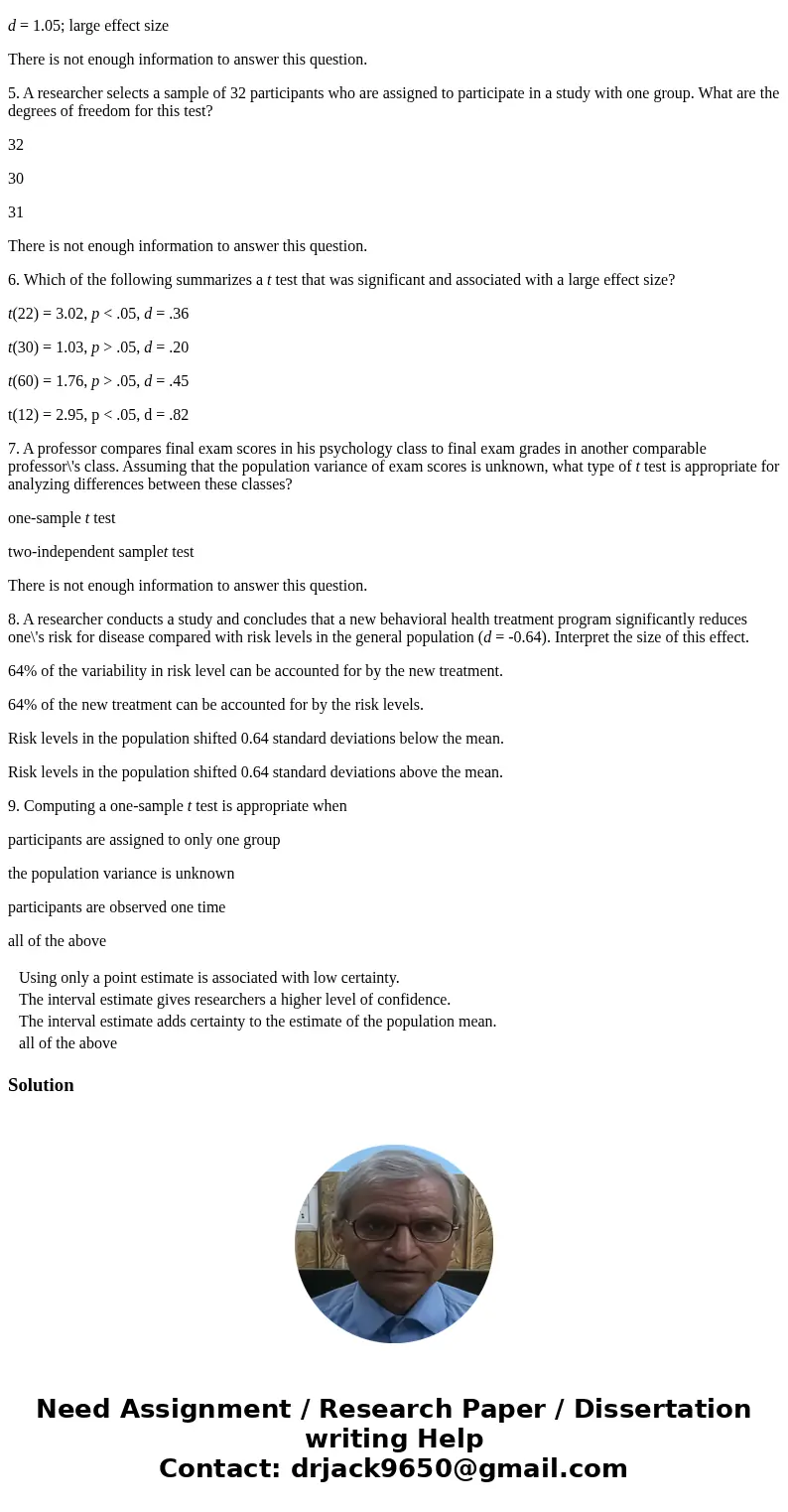1 A point estimate is typically reported with an interval es
1. A point estimate is typically reported with an interval estimate. Why?
Using only a point estimate is associated with low certainty.
The interval estimate gives researchers a higher level of confidence.
The interval estimate adds certainty to the estimate of the population mean.
all of the above
2. In a sample of 12 participants, a researcher estimates the 80% CI for a sample with a mean of M = 22.3 and an estimated standard error (SM) of 4.7. What is the confidence interval at this level of confidence?
80% CI 12.1, 32.5
80% CI 17.6, 27.0
80% CI 15.9, 28.7
There is not enough information to answer this question.
3. It is most appropriate to report effect size with a significant result. Why is it generally inappropriate to report effect size with insignificant results?
Because insignificant results will always have an effect size equal to 0.
Because insignificant results indicate that an effect size is also insignificant.
Because it makes little sense to report the size of an effect that you just concluded doesn\'t exist.
Because the probability of the size of an effect varies depending on the significance of the result.
4. A researcher reports that the mean time it takes to complete an experimental task is 1.4±8.0 (M±SD) seconds. If the null hypothesis was that the mean equals 1.0, then what is the effect size for this test using estimated Cohen\'s d?
d = 0.05; small effect size
d = 0.50; medium effect size
d = 1.05; large effect size
There is not enough information to answer this question.
5. A researcher selects a sample of 32 participants who are assigned to participate in a study with one group. What are the degrees of freedom for this test?
32
30
31
There is not enough information to answer this question.
6. Which of the following summarizes a t test that was significant and associated with a large effect size?
t(22) = 3.02, p < .05, d = .36
t(30) = 1.03, p > .05, d = .20
t(60) = 1.76, p > .05, d = .45
t(12) = 2.95, p < .05, d = .82
7. A professor compares final exam scores in his psychology class to final exam grades in another comparable professor\'s class. Assuming that the population variance of exam scores is unknown, what type of t test is appropriate for analyzing differences between these classes?
one-sample t test
two-independent samplet test
There is not enough information to answer this question.
8. A researcher conducts a study and concludes that a new behavioral health treatment program significantly reduces one\'s risk for disease compared with risk levels in the general population (d = -0.64). Interpret the size of this effect.
64% of the variability in risk level can be accounted for by the new treatment.
64% of the new treatment can be accounted for by the risk levels.
Risk levels in the population shifted 0.64 standard deviations below the mean.
Risk levels in the population shifted 0.64 standard deviations above the mean.
9. Computing a one-sample t test is appropriate when
participants are assigned to only one group
the population variance is unknown
participants are observed one time
all of the above
| Using only a point estimate is associated with low certainty. | ||
| The interval estimate gives researchers a higher level of confidence. | ||
| The interval estimate adds certainty to the estimate of the population mean. | ||
| all of the above |
Solution


 Homework Sourse
Homework Sourse